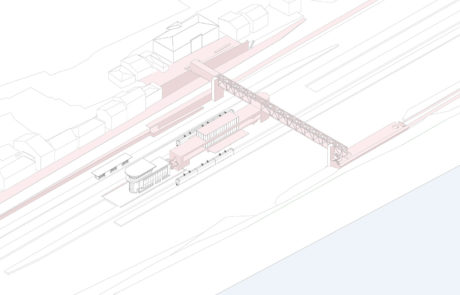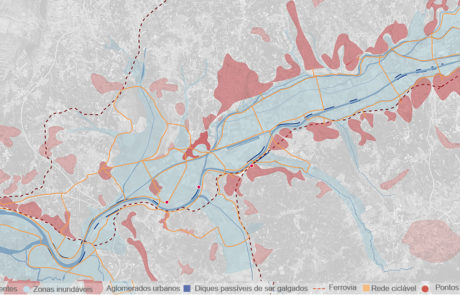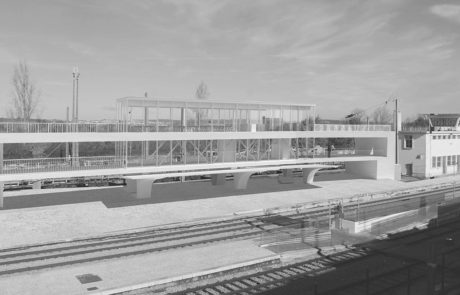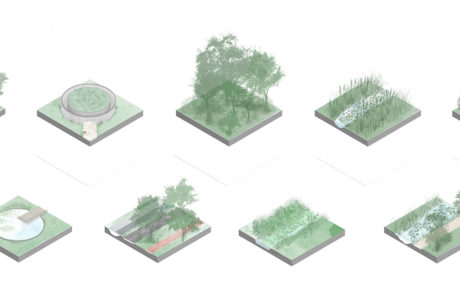Desenhar limites no Baixo Mondego

Autoria: Sara Cristina Almeida
Orientação: João Paulo Cardielos
Co-Orientador:
Universidade de Coimbra - Faculdade de Ciências e Tecnologia
Memória descritiva
Esta dissertação centrou-se num território sensível: o Baixo Mondego. Caracteriza-se por ser o último troço do Rio
Mondego, uma planície aluvial muito fértil, com grandes áreas agrícolas.
Este é um território vulnerável a cheias. Depois de dois grandes planos de regularização do canal do rio Mondego (o primeiro no século XVIII e o segundo no século XX), a ocorrência de cheias ordinárias diminuiu significativamente, porém têm ocorrido várias cheias catastróficas, nomeadamente a grande cheia de 2001. Com a proposta ministral de mudança de paradigma em relação à gestão do risco de cheia, esta vulnerabilidade surge como uma forma de reinterpretar o território, nomeadamente no redesenho de alguns troços de margem do rio Mondego – aumentando a resiliência do território.
Foram estudados vários troços do rio Mondego, e estabelecidas estratégias com o objetivo de infraestruturar a paisagem utilizando soluções baseadas na natureza, com intervenções desde a substituição da ETAR de Coimbra por uma estação de tratamento fitossanitário a um pequeno miradouro sobre o leito de cheia. O setor mais desenvolvido foi o de Granja do Ulmeiro e Alfarelos. Aqui uma das estruturas afetadas é a linha ferroviária. Esta infraestrutura de mobilidade foi a principal razão do crescimento do aglomerado entre o século XIX e o século XX e verifica-se a importância que este local já teve pelo significante parque edificado associado à estação. Em 2001, o edifício de passageiros da estação – construído no fim do século XIX – foi demolido e até hoje ainda não foi substituído.
A proposta procura retornar a dignidade à estação, assinalando-a como um porta ferroviária do Baixo Mondego, permitindo a ligação a outros modos de transporte e também prevendo um discurso com a alta velocidade. A proposta teve como princípio a valorização do edificado e estruturas existentes, mas também procura facilitar o contacto com a natureza e a margem direita. Pelo valor simbólico dos edifícios de passageiros na arquitetura ferroviária, este foi o edifício mais estudado na dissertação.
As várias propostas resultam de uma profunda curiosidade sobre estes locais e um conjunto de ensaios a diversas escalas.
DRAW LIMITS ON THE LOW MONDEGO
EQUIPPING A NETWORK OF LOCATIONS ASSOCIATED WITH WATER LINES
This dissertation focused on a sensitive territory: the Lower Mondego. It is characterized by being the last stretch of the
Mondego River, a very fertile alluvial plain with large agricultural areas.
This is a vulnerable territory to flooding. After two major regularization plans of the Mondego River main channel/canal (the first in the 18th century and the second in the 20th century), the occurrence of ordinary floods decreased significantly, although several catastrophic floods have occurred since, notably the great flood of 2001. With the ministerial proposal of a paradigm shift in relation to flood risk management, this vulnerability emerges as a way to reinterpret the territory, namely towards redesign some stretches of the Mondego river bank – increasing the territory’s resilience.
Various sections of the Mondego River were studied, and strategies were established with the goal of infrastructing the landscape using nature-based solutions, with interventions going from the conversion of Coimbra’s wastewater treatment to a constructed wetland system to a small viewpoint above the flood bed. The most developed sector was Granja do Ulmeiro and Alfarelos. There, one of the affected structures is the railway line. This mobility infrastructure was the main reason for the urban growth between the 19th and 20th century, where we can see the significance of this place through the building stock associated with the station. In 2001, the station’s passenger building – built in the end of the 19th century – was demolished and to this day has not been replaced.
The proposal seeks to return dignity to the station, marking it as a railway gateway to the Lower Mondego, connecting it to other modes of transportation envisioning a high-speed rail. The proposal was based on the principle of valuing the existing buildings and structures, but also seeks to facilitate contact with nature and the river’s right bank. Due to the symbolic value of passenger buildings in railway architecture, this was the most studied building in the dissertation.
The various proposals result from a deep curiosity about these places and a set of tests at different scales.






